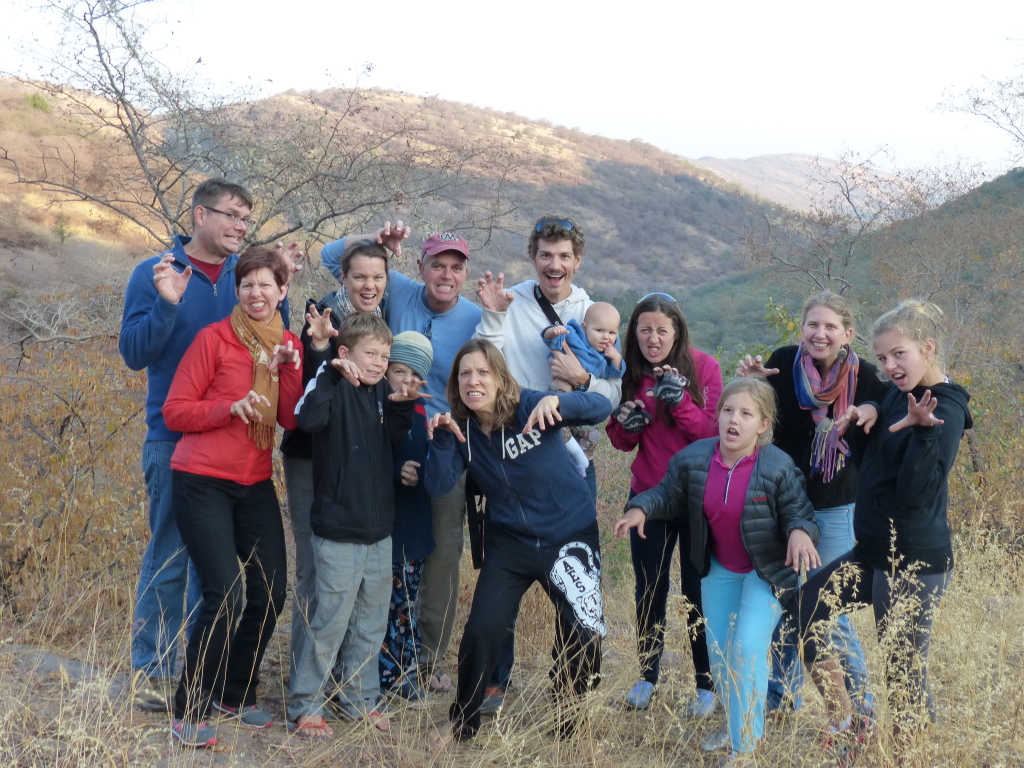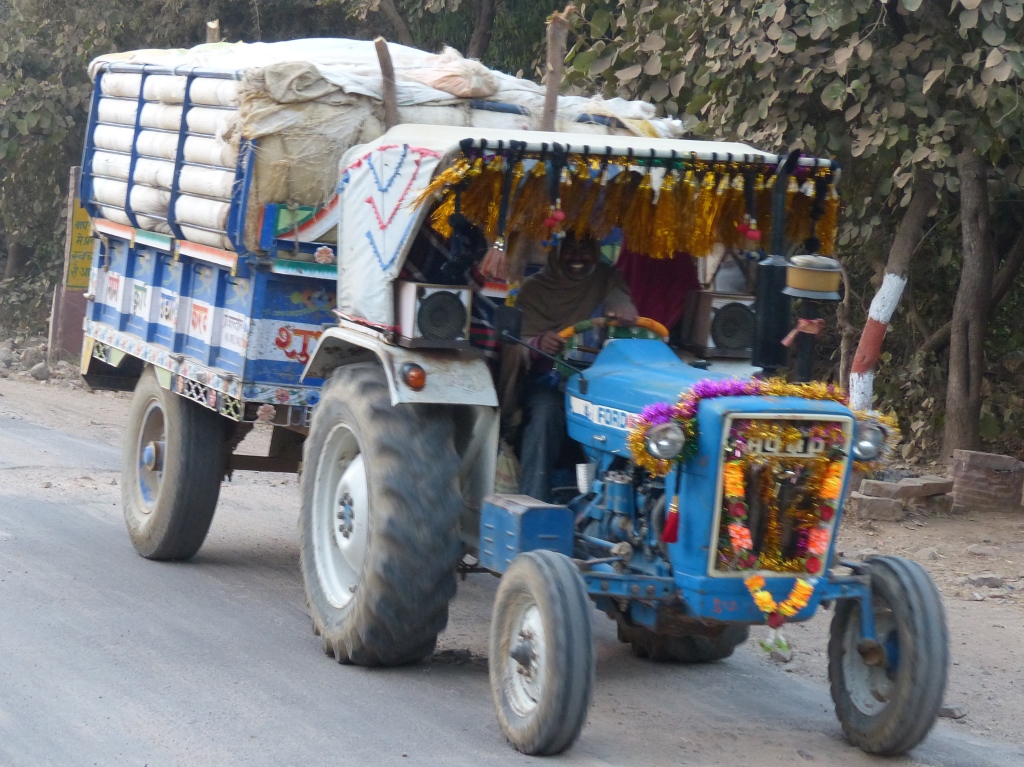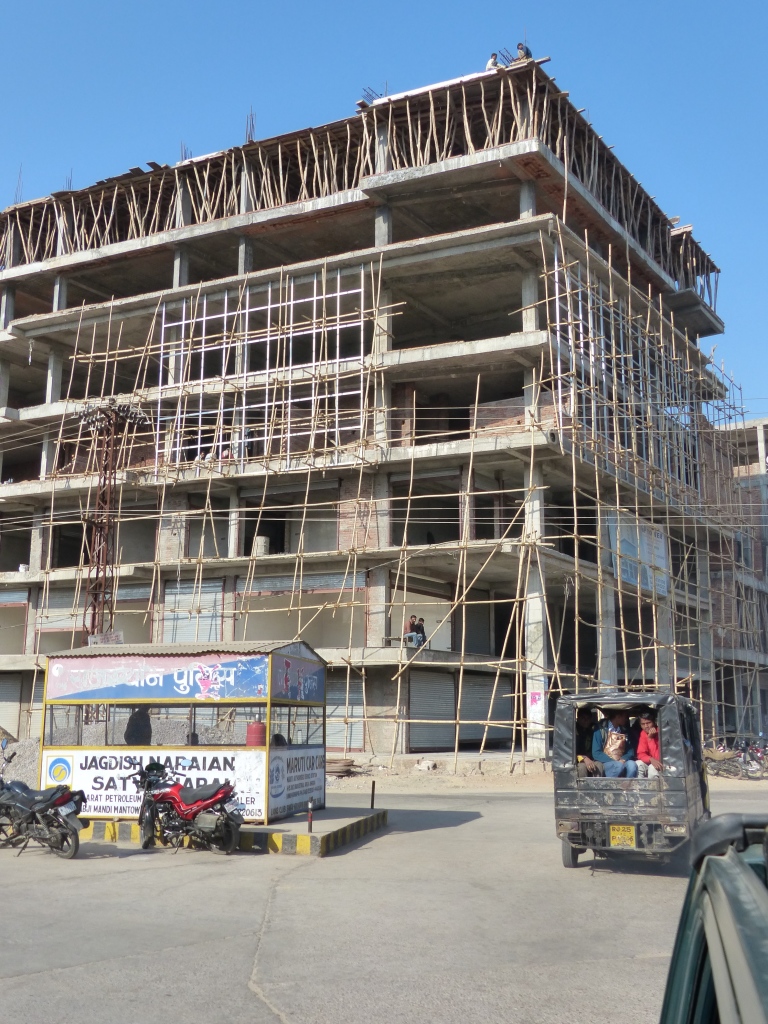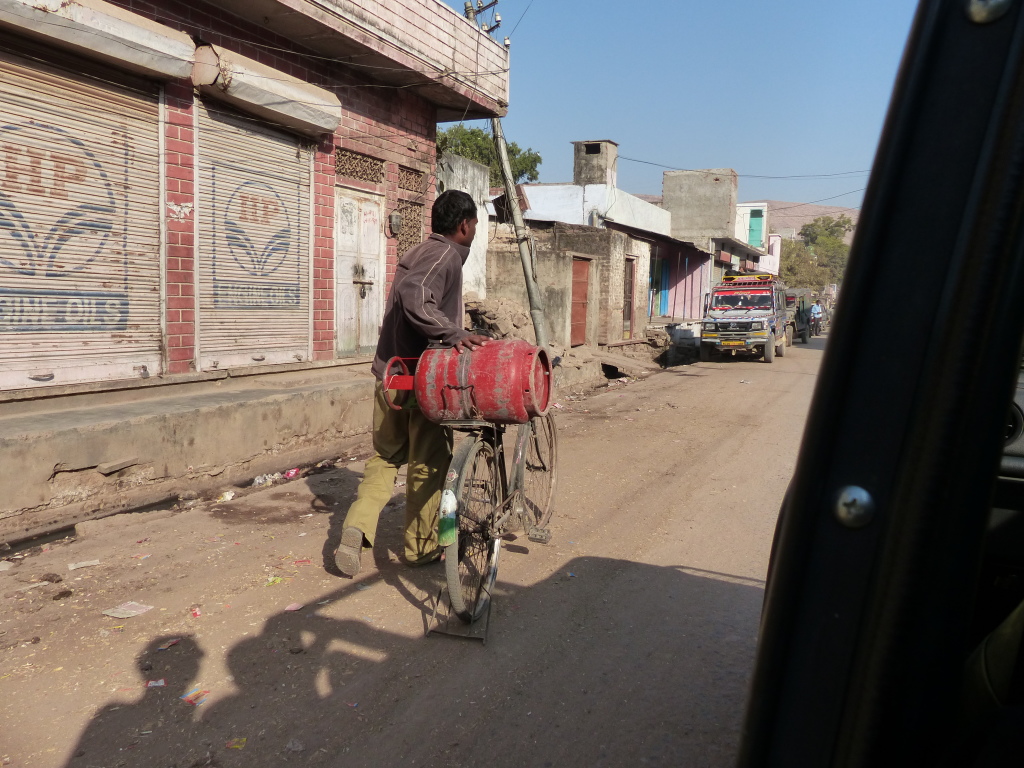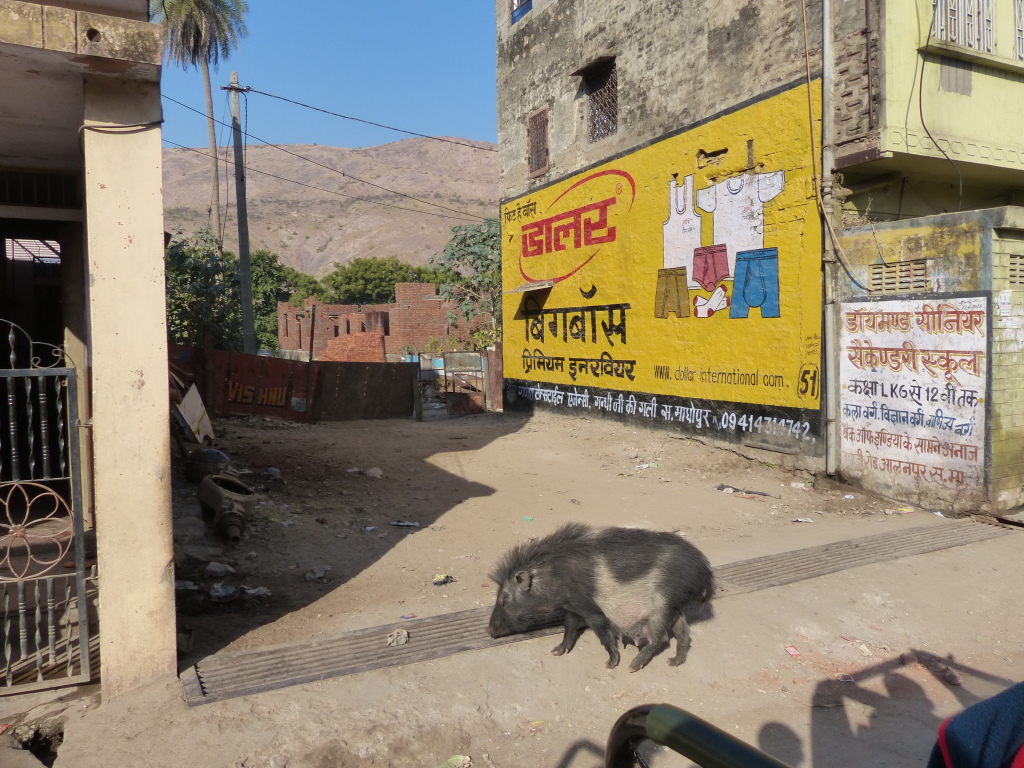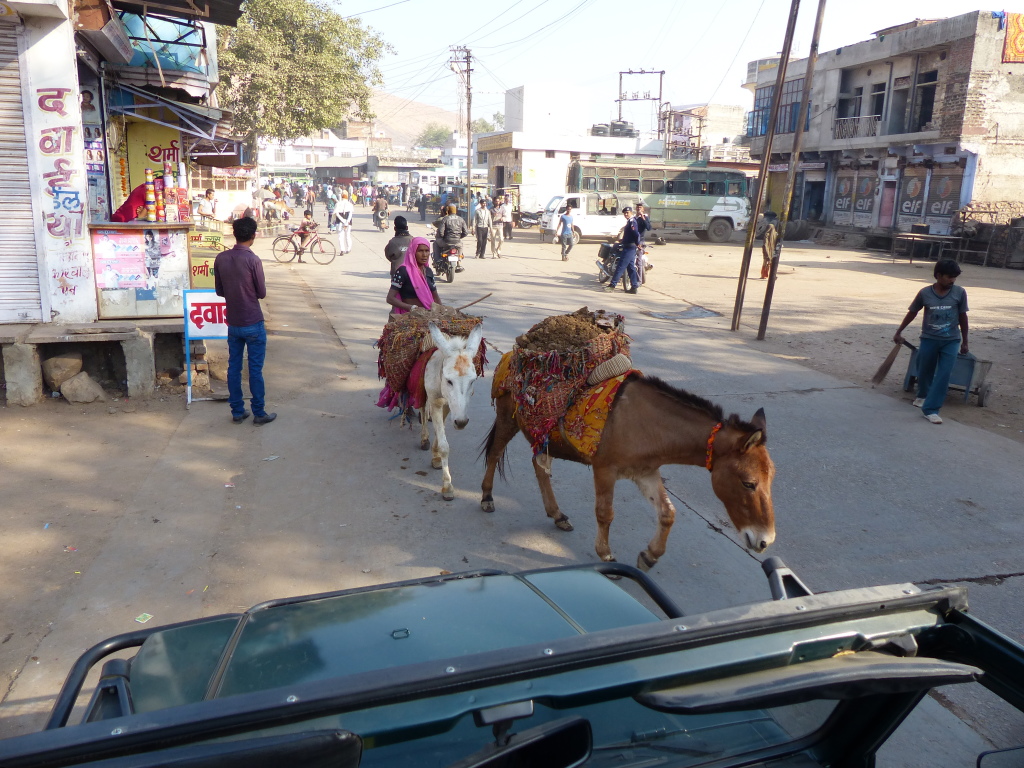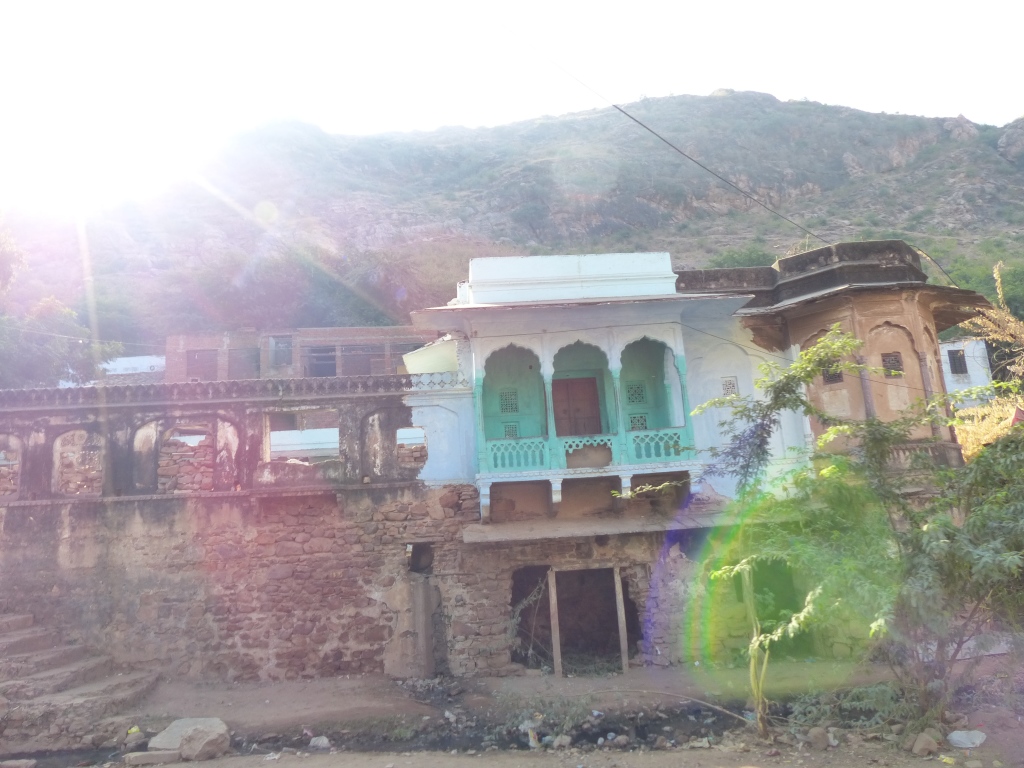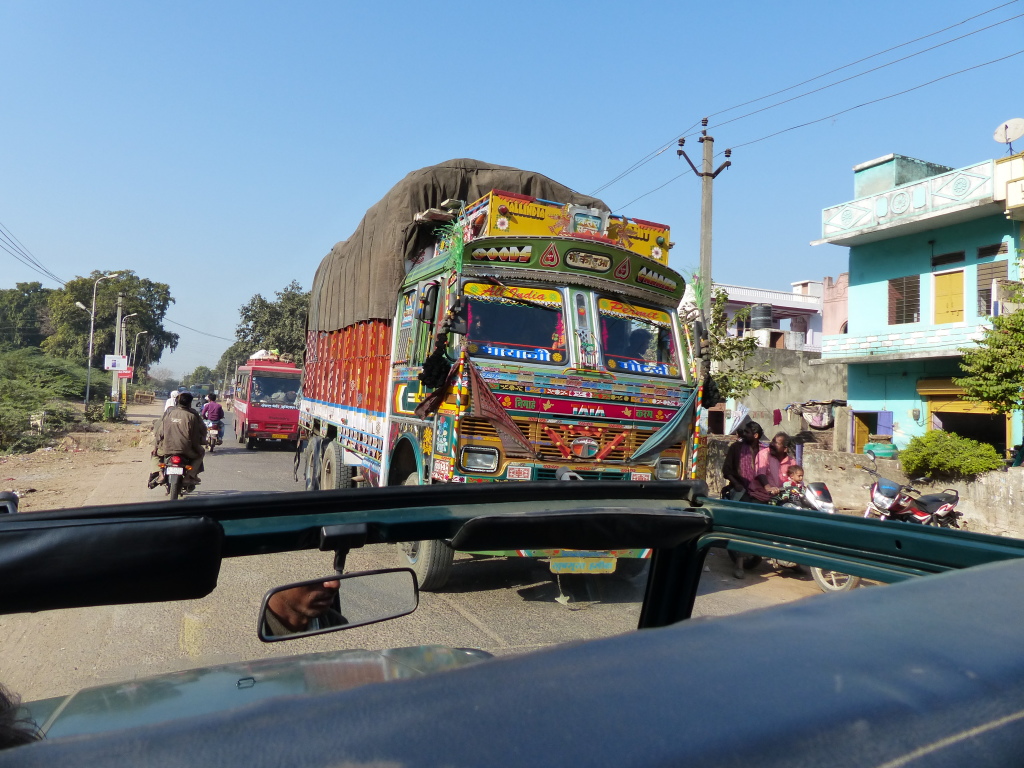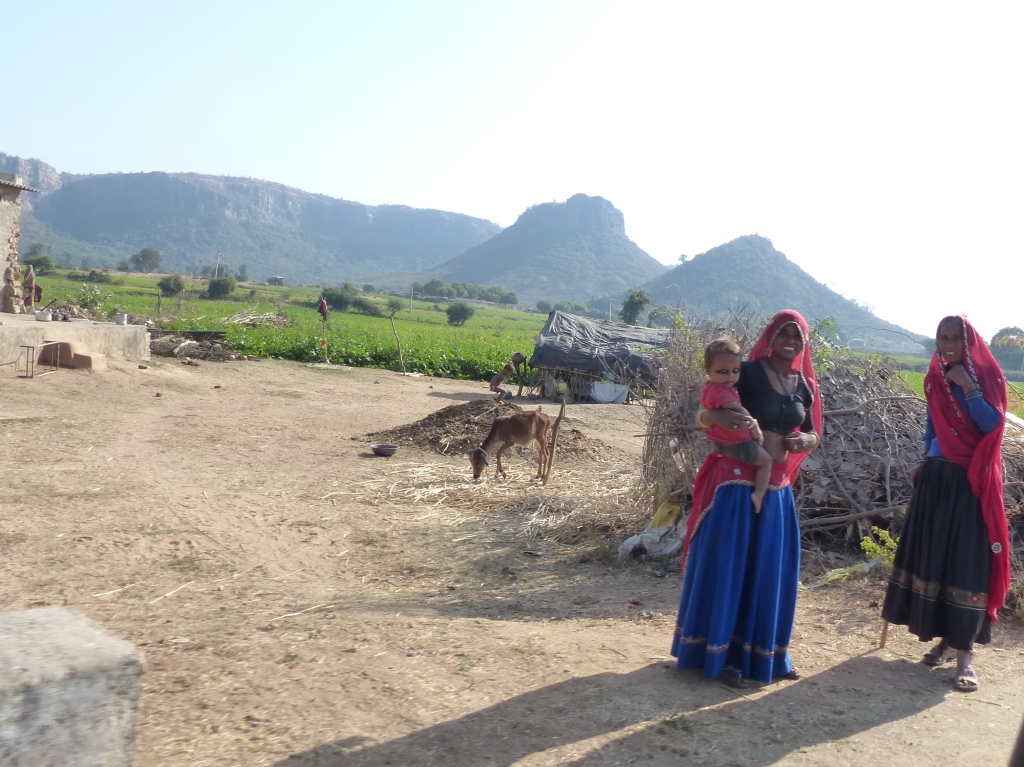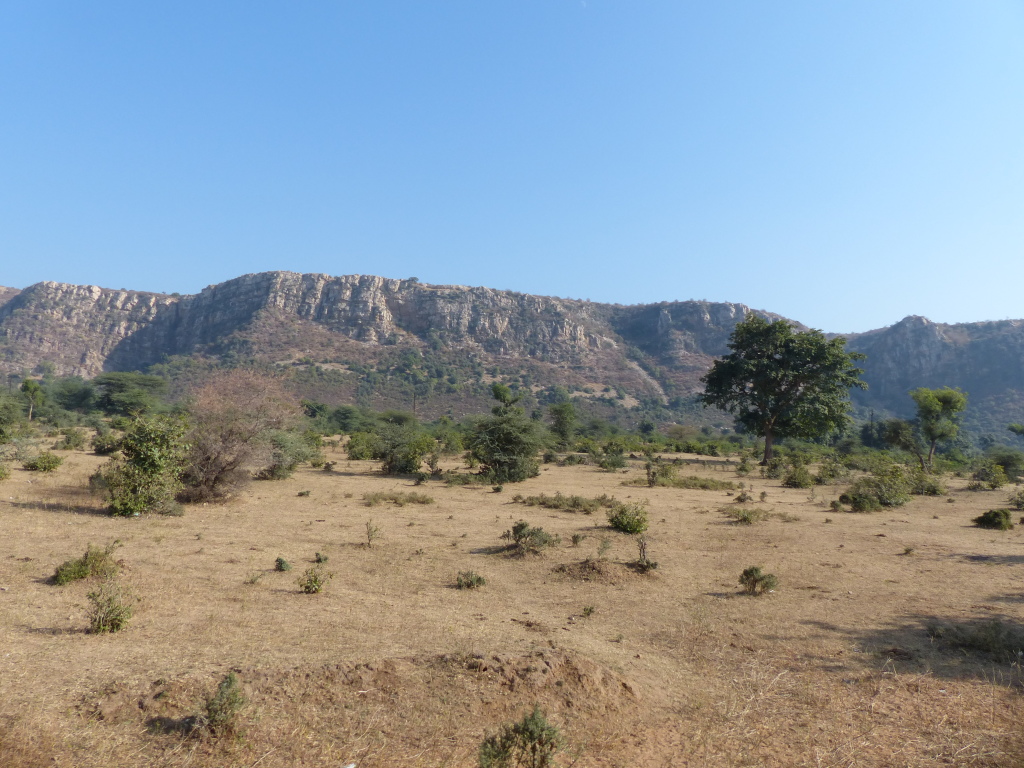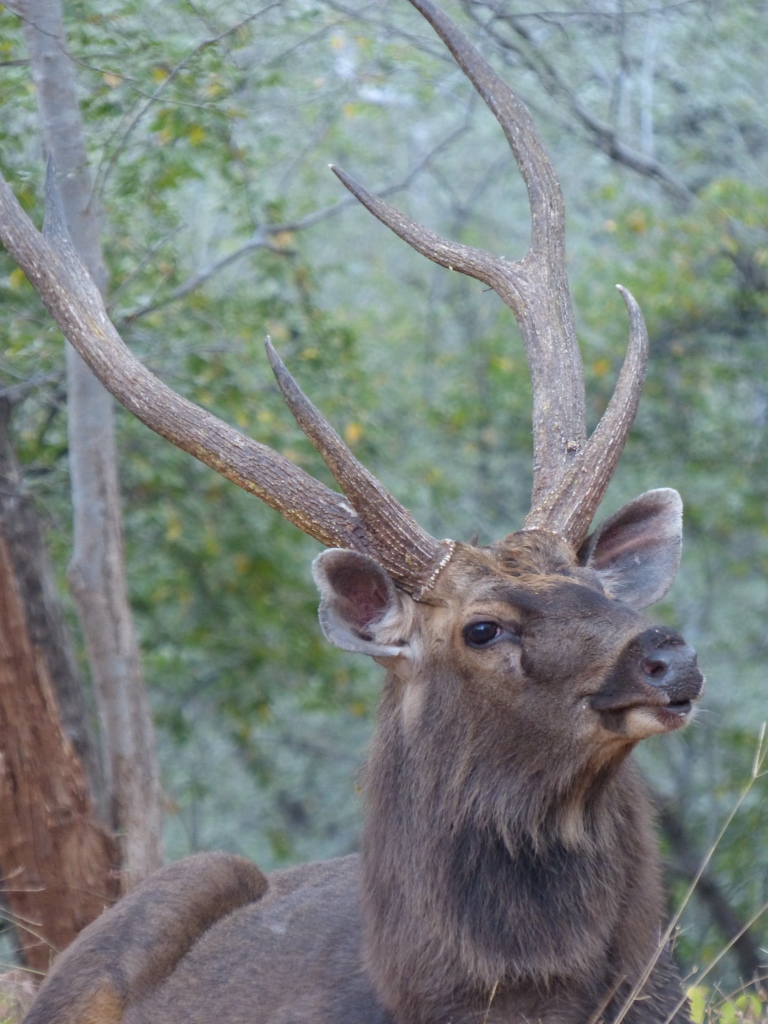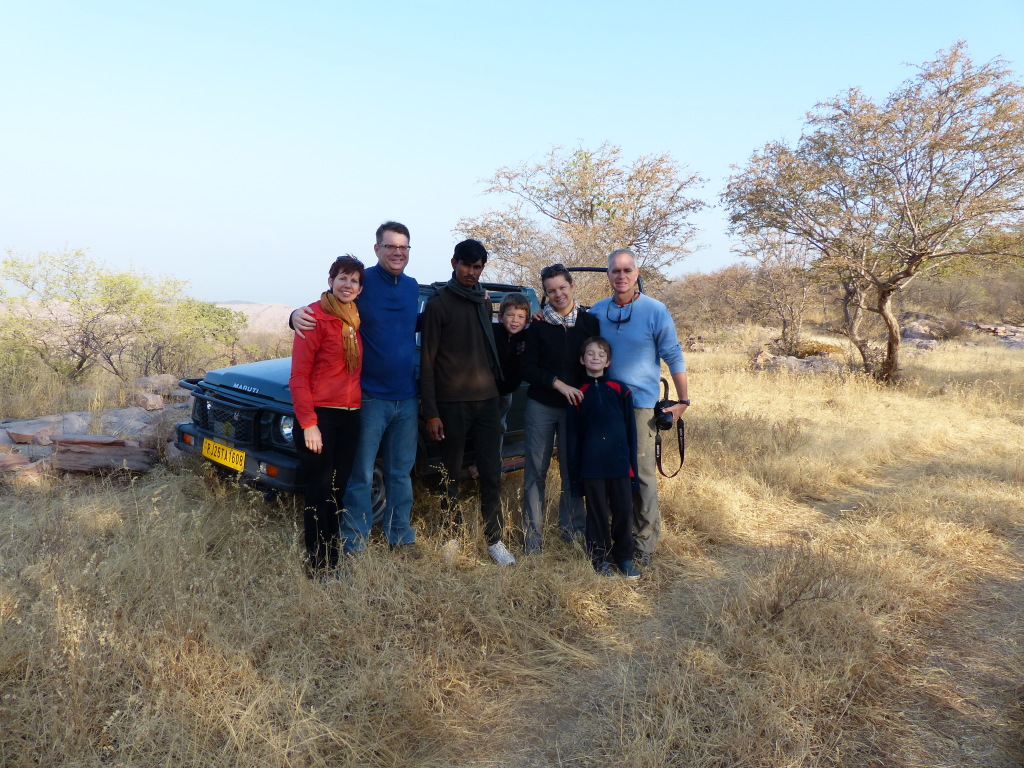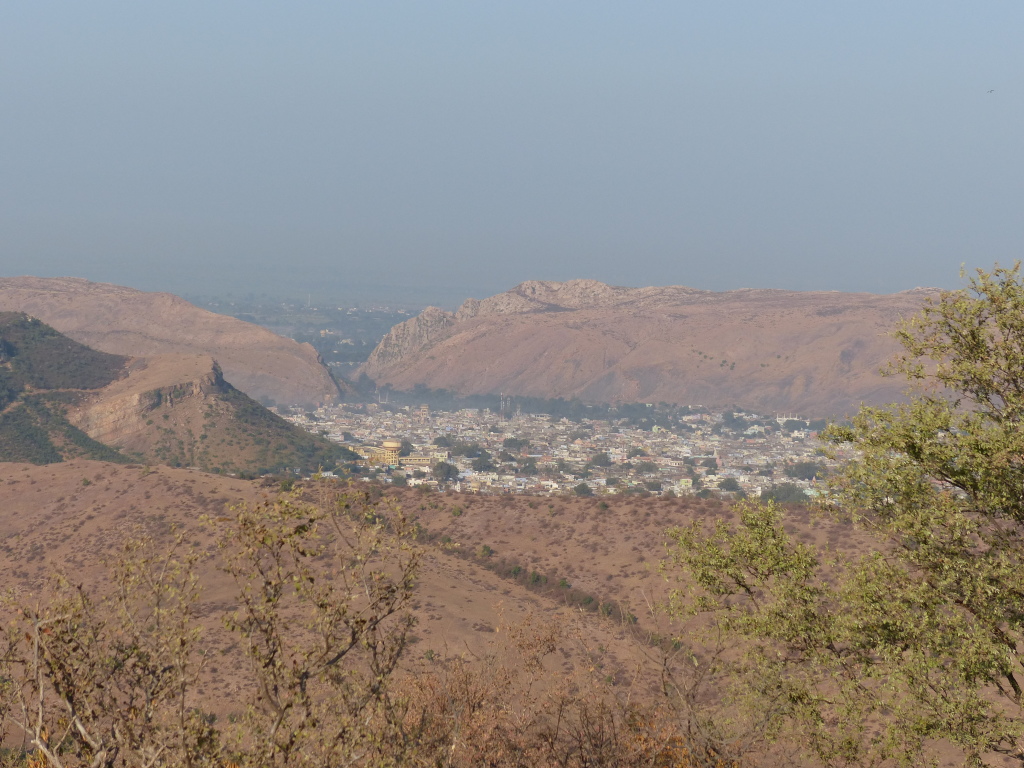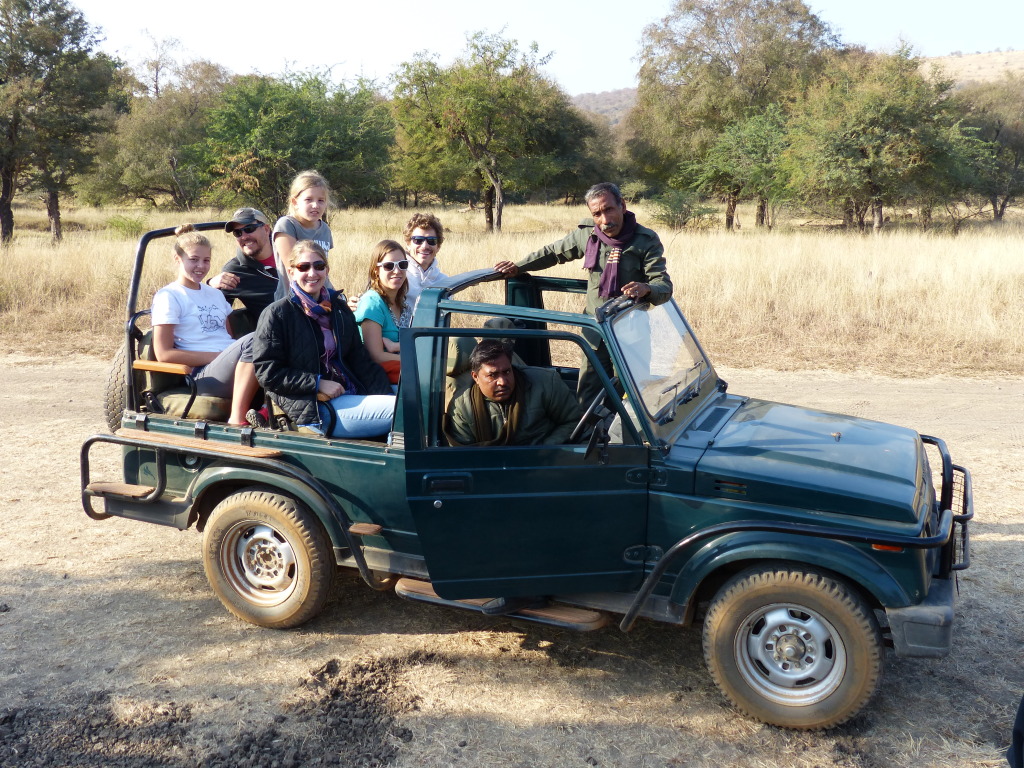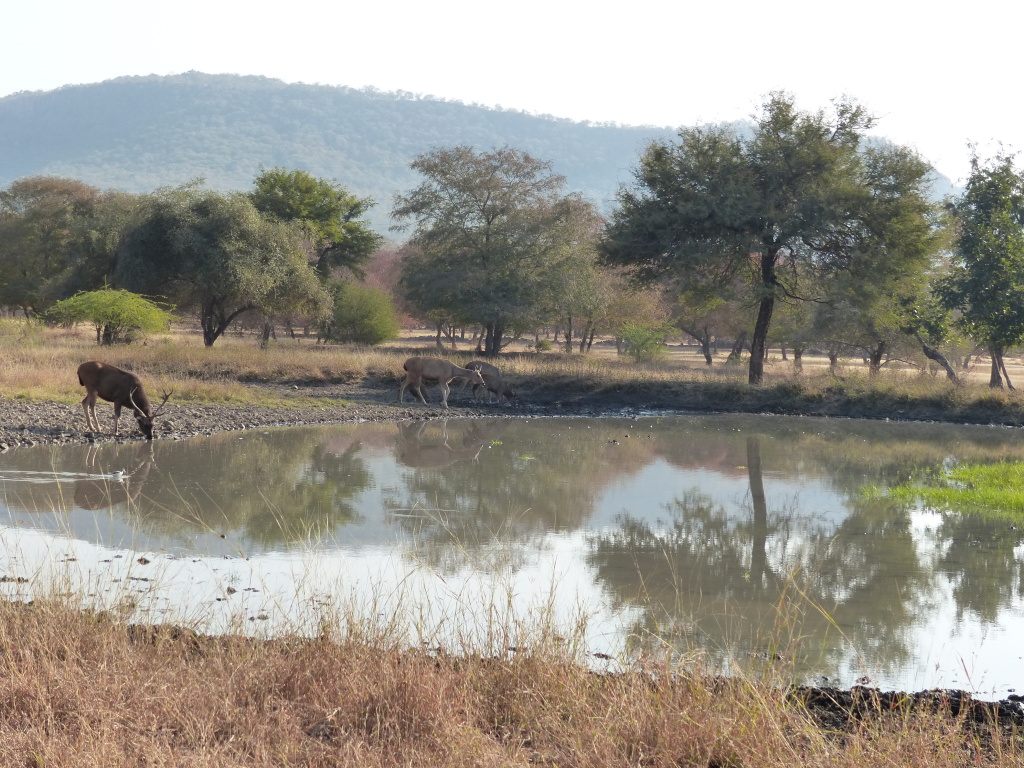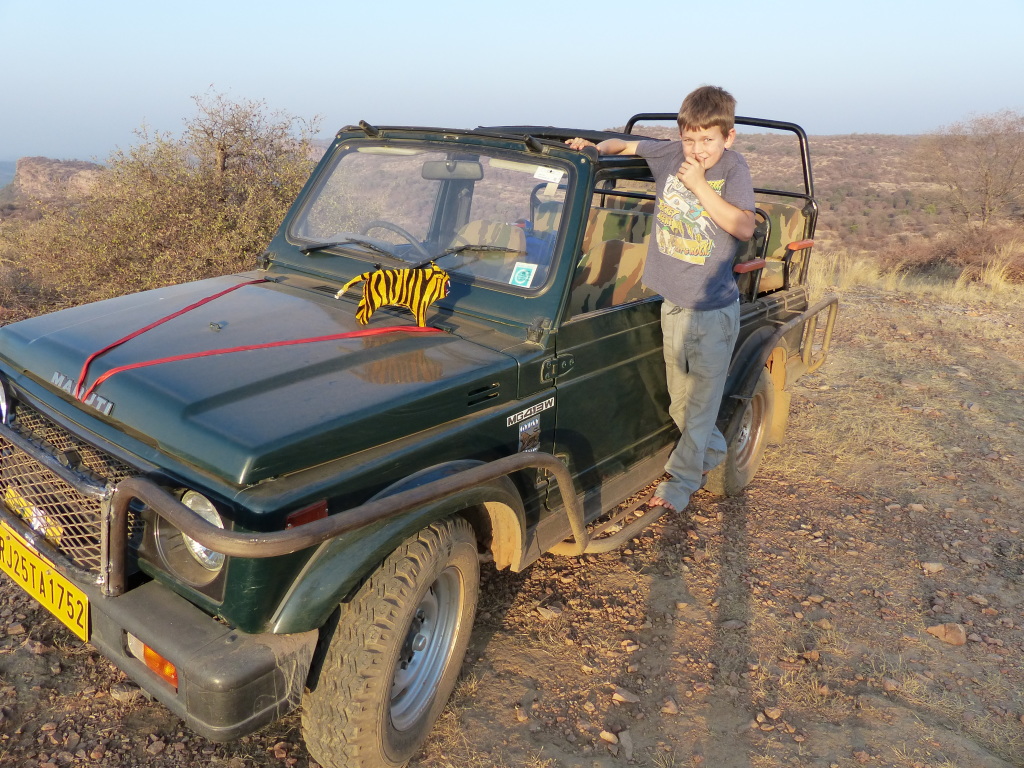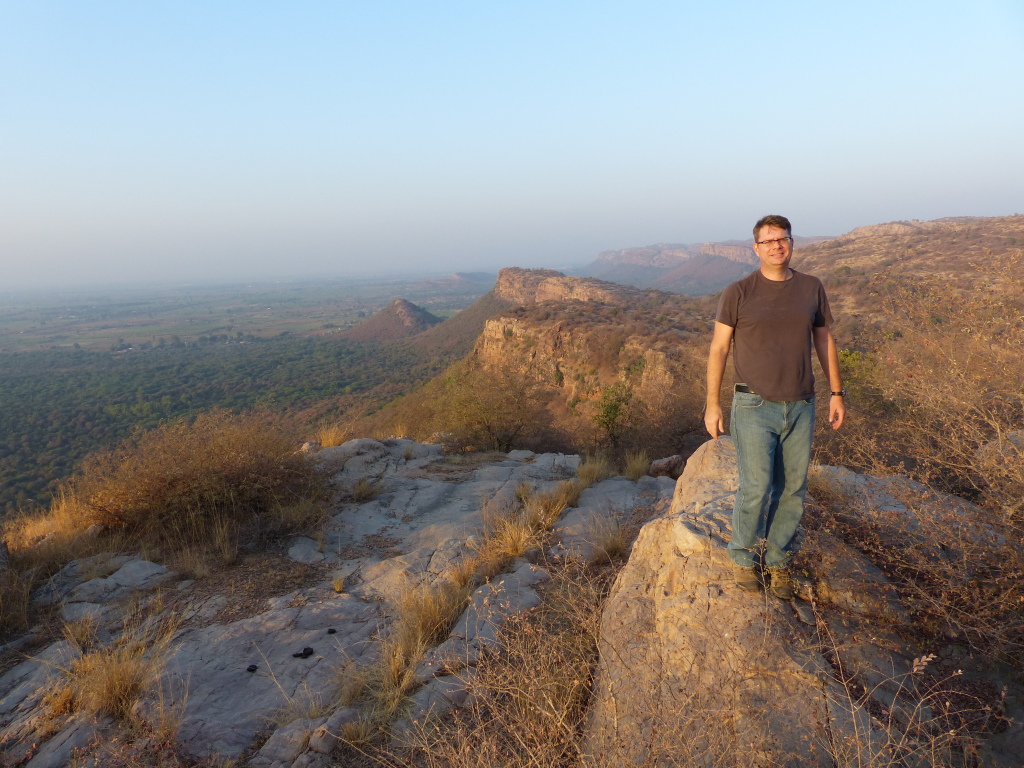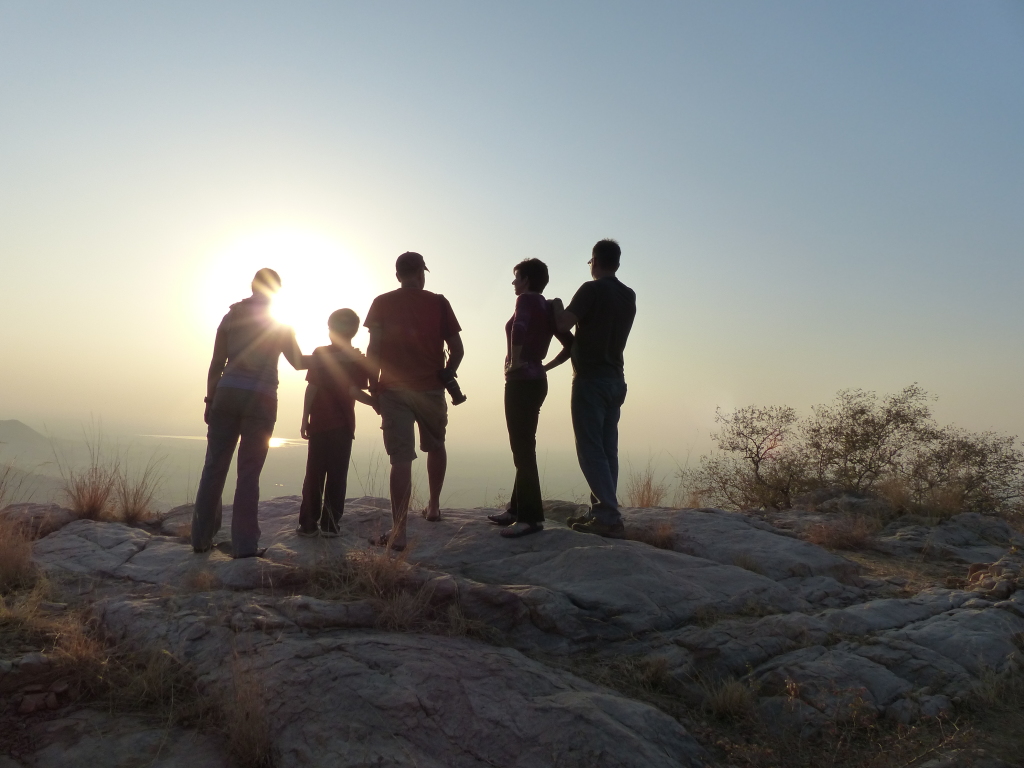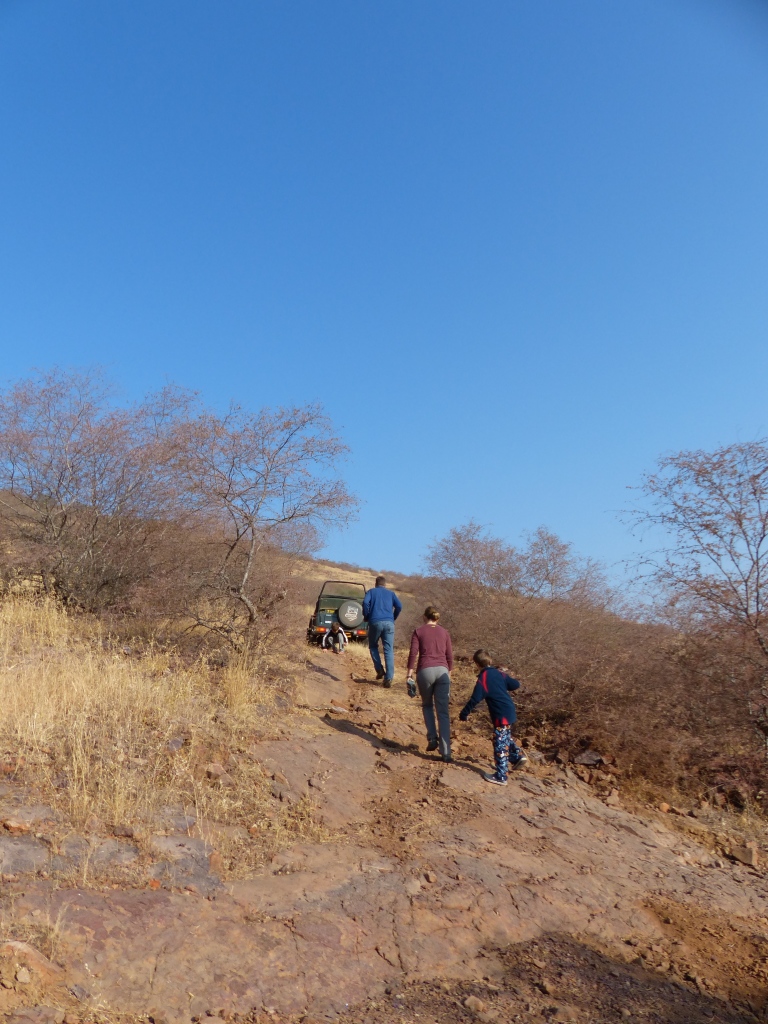A scroll through last weekend’s Facebook photos revealed a cornucopia of Thanksgiving parties and reunions enjoyed by our American friends and family around the world. As for us, Thanksgiving meant an Indian buffet and Rajasthani entertainment on the lawn of our hotel in Sawai Madhopur, five hours southwest of Delhi by train. We traveled with a few other families from school, and we all felt grateful for the fresher air and relative peace.
Here’s a little history about the the park from the website Sanctuary Asia:
The Ranthambhore Fort, occupied for years by Raja Hamir, has lent its name to the Tiger Reserve. A Hindu battlement, it has seen a series of Muslim rulers try unsuccessfully to lay siege to it, including Allaudin Khilji in 1301.The army of the Moghul Emperor Akbar camped here (1558-1569) and the Akbar Namah records the menu that the generals were served when they had a meal under the famous banyan tree that visitors can still see at the base of the ramparts.
The park area itself was once the hunting preserve of the Maharajas of Jaipur and many tiger shoots took place here including an infamous visit in the early sixties when a tiger was set up to be shot by Queen Elizabeth II.The Ranthambhore Park earned Sanctuary status in 1958 and when Project Tiger was launched in 1973, it really began to receive the protection it deserved. Placed under the care of the now-famous Fateh Singh Rathore, by the 80s the park had earned itself the distinction of being one of the world’s best-known tiger forests.
The first real signs of ecological renewal were the scores of once-dry pools, streams and rivulets that began running full of water all year long. This helped native plants to re-establish themselves. A major side-benefit of Ranthambhore’s return to health was the ground water recharge service performed by the forest, which helped restock wells in surrounding villages.
For our safaris, we split into two jeeps. The Dents rode with the Rosenfields: Kristen and Jonah, and their two boys, Asa and Liam. In the other jeep: the Gregors and the Curreys. Alicia Brown skipped the first two safaris to rest her weary tummy.
To reach the tiger park, we rolled through the city streets for a drive-by glimpse of daily life. Flaunting designs shaved into their fur or painted with dye, camels hauled carts loaded with bricks and marble slabs. Psychedelically decorated trucks – every inch adorned with colorful designs, sanskrit wishes, huge pompons and pleasantries such as “Horn Please” in elegant script – blared tinny music or parked roadside with their hoods up. Smiling faces pressed against the glass or hung out the windows of overstuffed buses with additional passengers waving from the rooftop. Where the path narrowed and traffic bottlenecked, piles of trash attracted boars, goats, cows, dogs and monkeys. Donkeys carrying baskets of dirt wove between the cars, and villagers carried on with their routines.
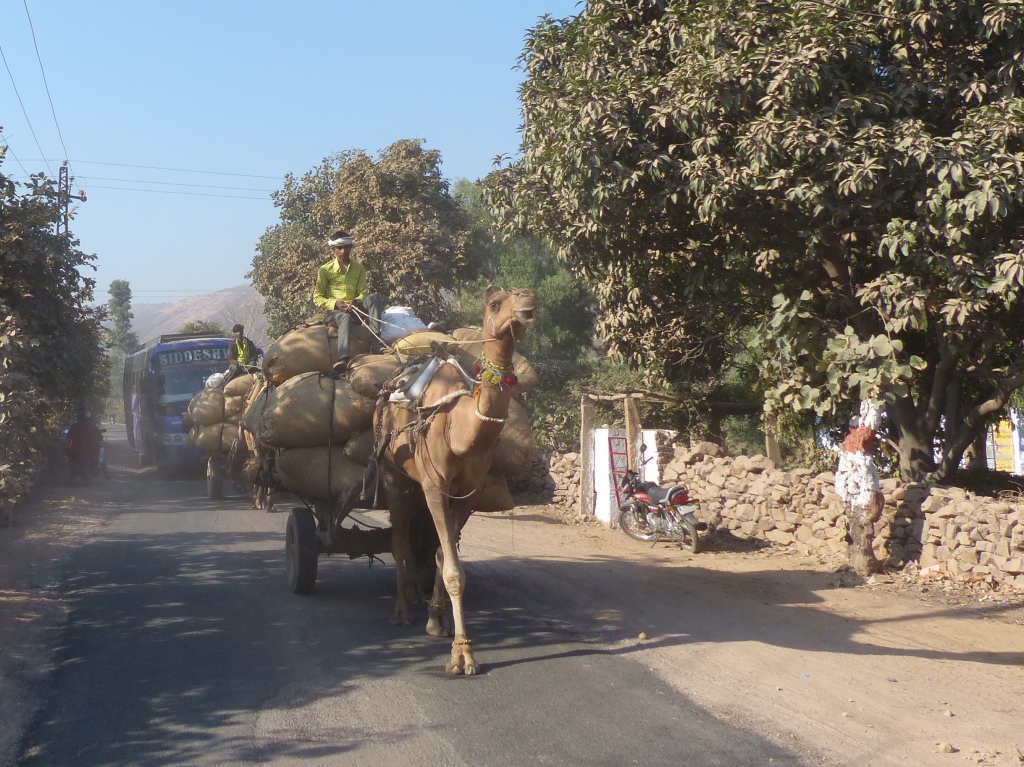
Out in the countryside, the scenery changed dramatically. Deforested farmland and pastures bumped up against the rugged hills of the Aravelli range, one of the oldest mountain ranges in the world and the same ridge that peters out near our home in Delhi.
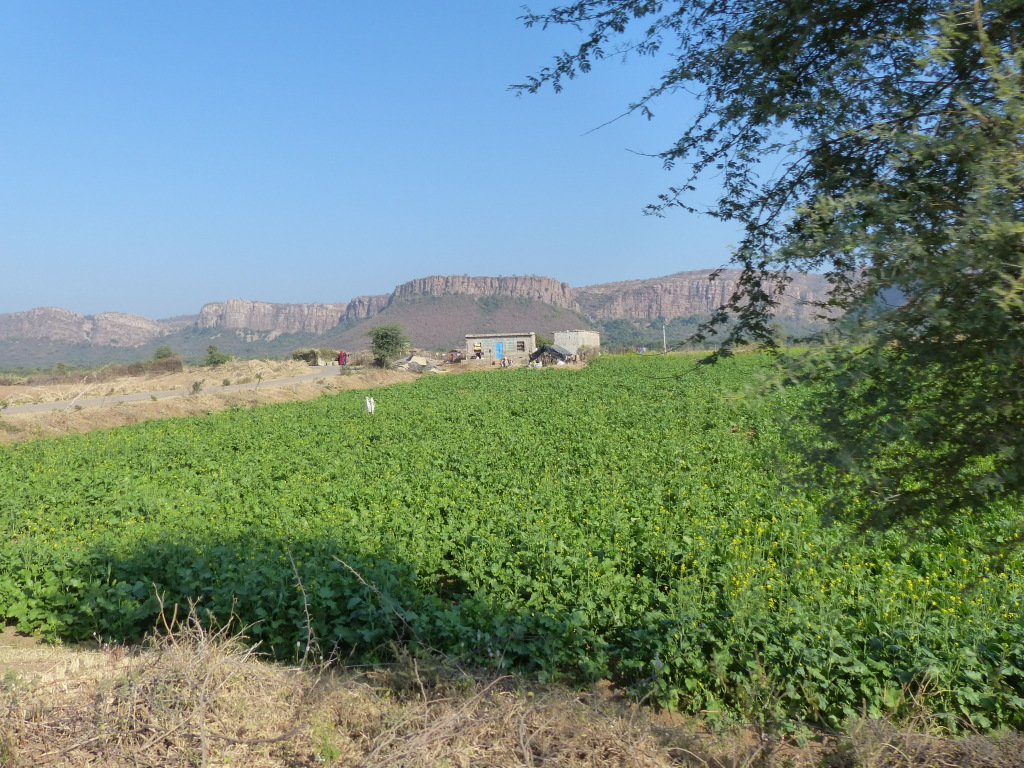
On our first safari, Friday morning, we spotted tiger prints in the dirt but no tigers in District 6.
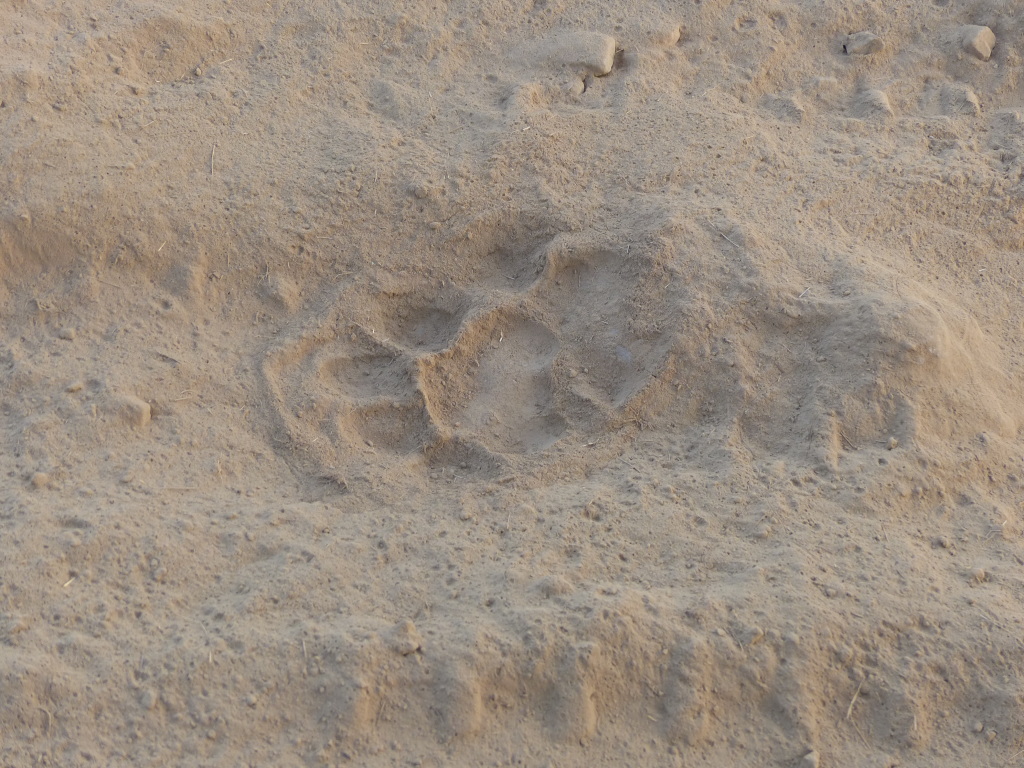
We bumped through a stunning landscape turned golden by the rising sun and saw other interesting mammals, such as spotted deer, nilgai and antelope. Cresting a hill, we encountered this guy, a sambar deer. He sat calmly, staring at us and chewing nonchalantly with no clear intention to move out of the road until the driver revved the engine and rolled forward a bit. Still nonplussed, the deer slowly stood and stepped off the road into the woods.
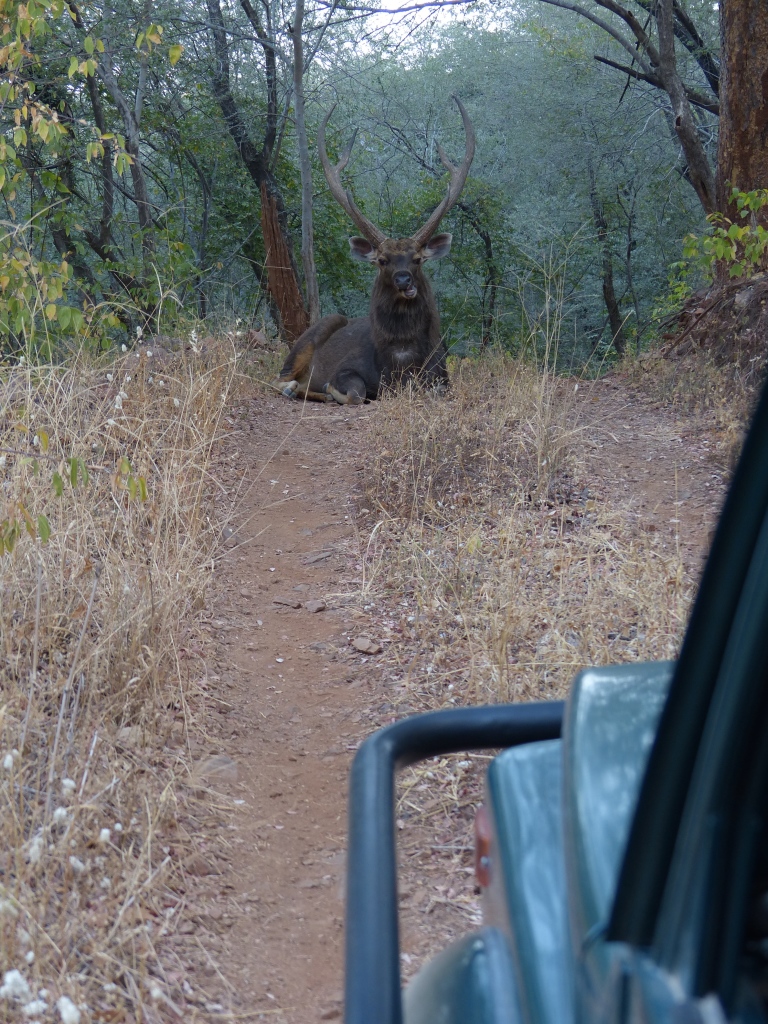
Our guide explained two ways they track tigers in the park: footprints and warning sounds. We had seen the footprints, and soon passed a small deer running in the opposite direction of a sharp barking sound. A large gray nilgai was warning the other animals that danger lurked nearby. The nilgai stood alert at the edge of a cliff, looking down into the valley.
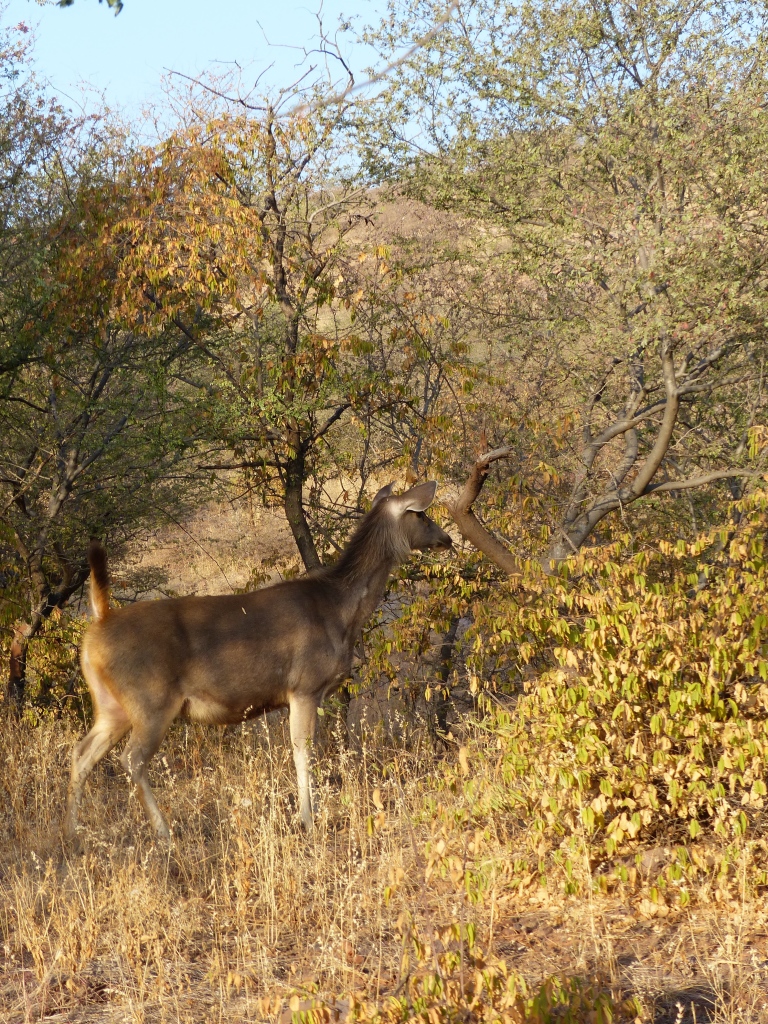
Occasionally it stomped a foot aggressively and startled us with its sudden barks. Eventually, a gray-and-black striped hyena scurried into view, only for a moment, and then both animals sped away in opposite direction. Afraid I’d miss it, I didn’t even raise my camera. “This is only the third time I have seen a hyena in my whole career,” the guide said. Small consolation for no tigers, but we’ll take it!
Our hyena looked just like these guys (which I found on the website Look At India.)
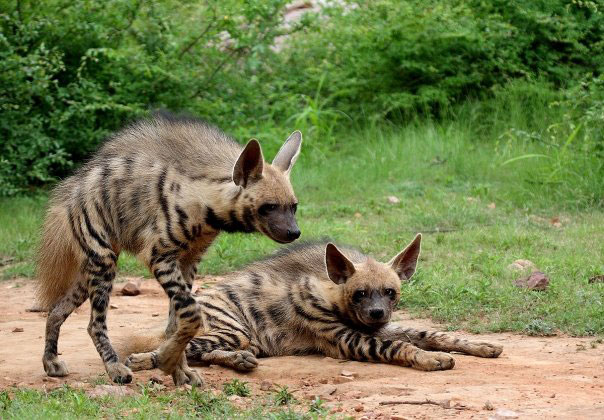
Other shots from the morning safari.
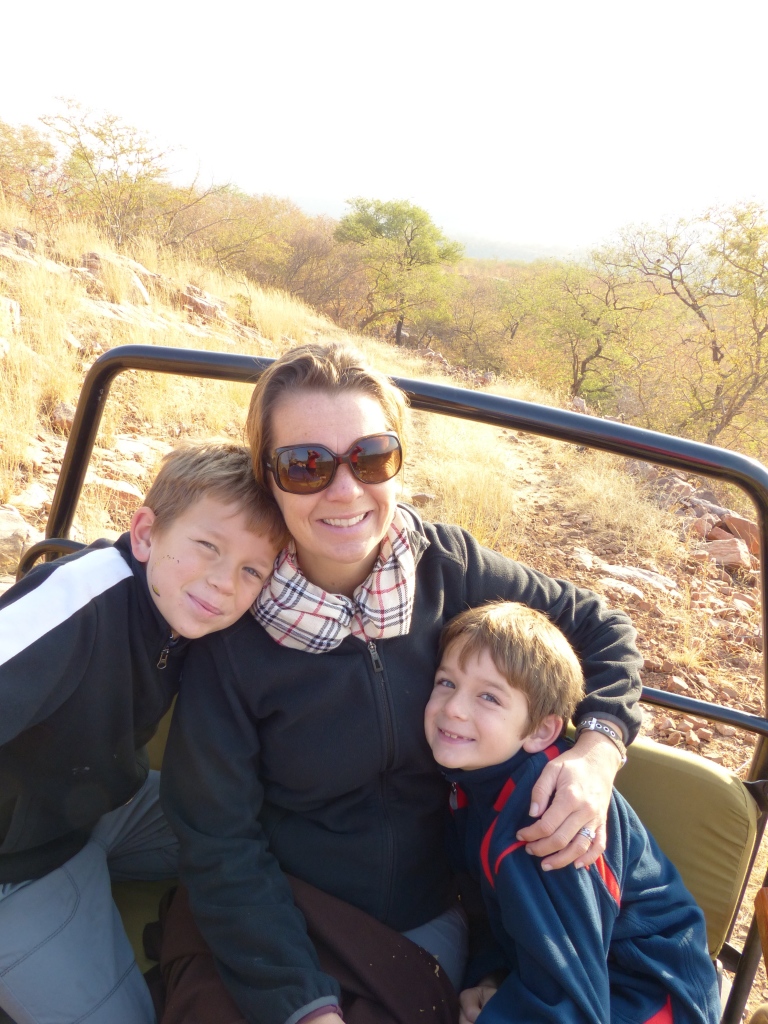
Safari number two, Friday afternoon in District 8, we spotted only one tiger. (I bought him from the puppet maker after the show Thursday night.)
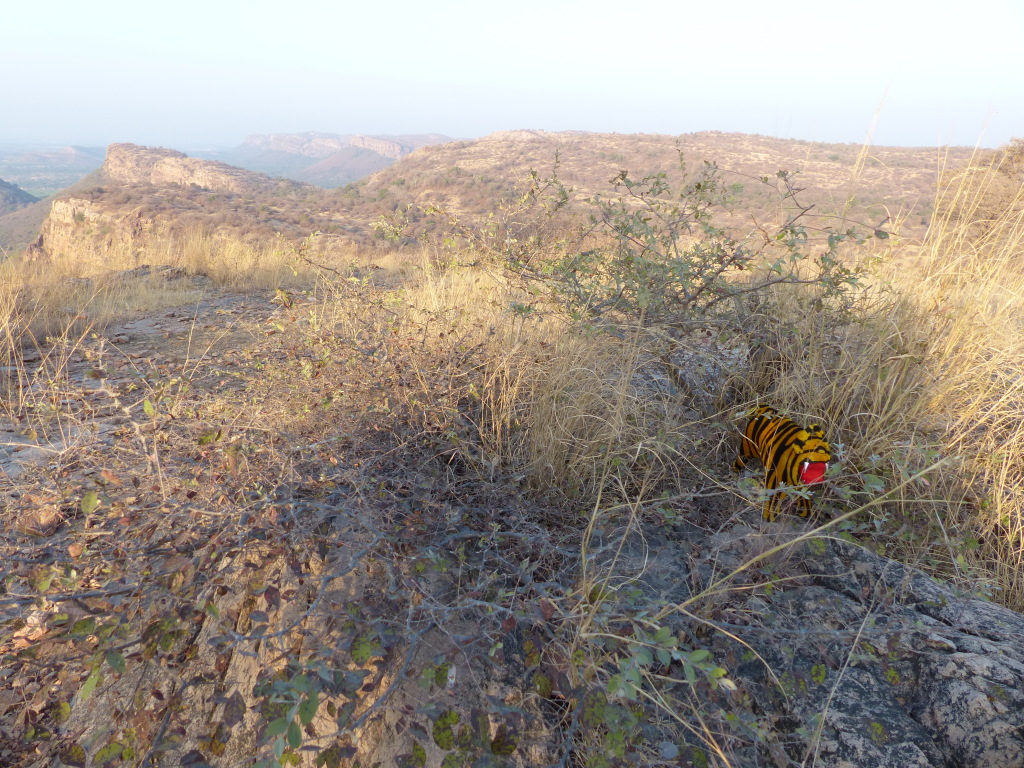
We enjoyed the view from this mountaintop.
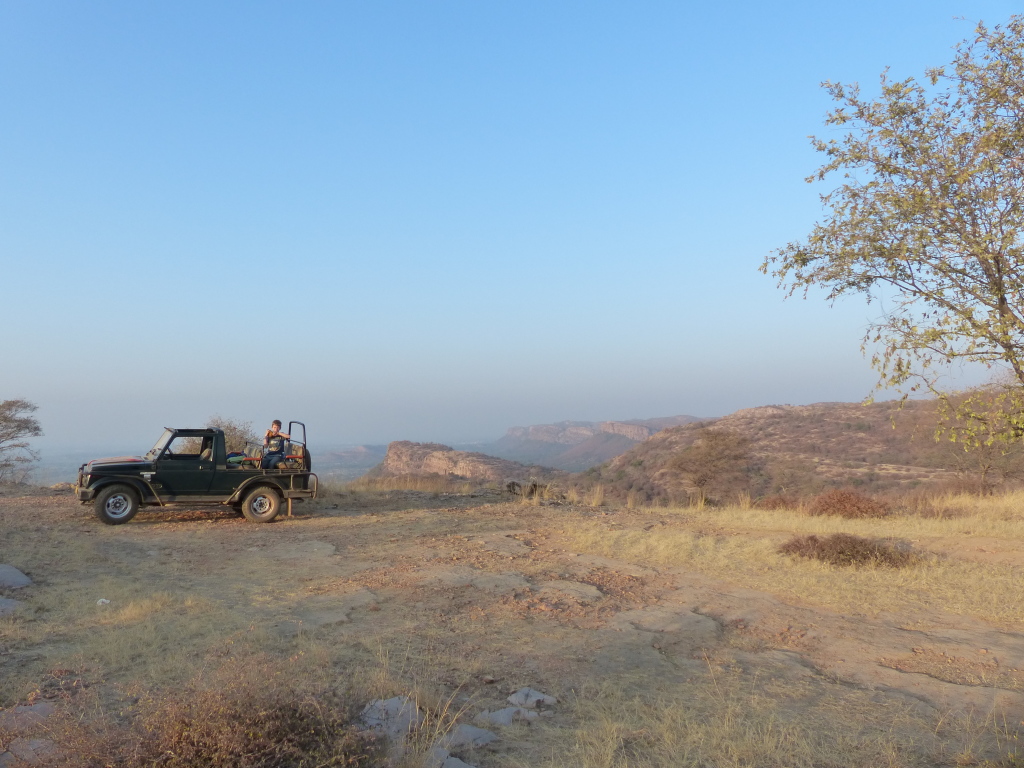
Otherwise, we saw some langur monkeys and a few other mammals.
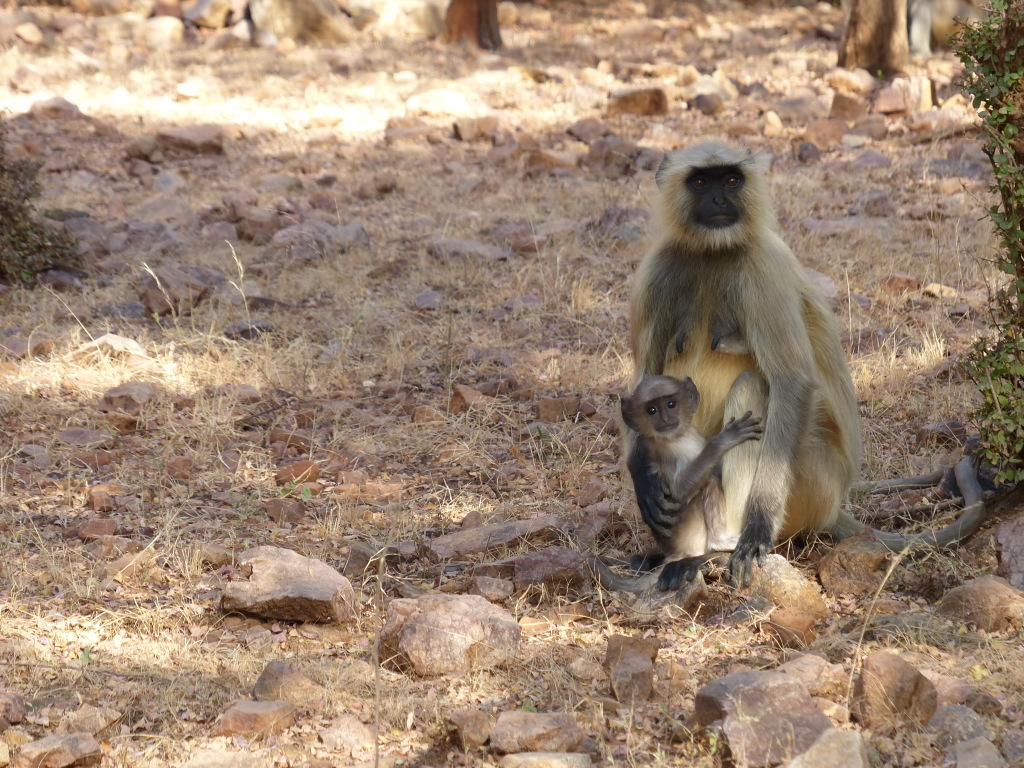
Just as we were heading out of the park, Kristen leaned forward, tapped the driver on the shoulder and said, “I just saw a leopard, and I am not even kidding.” Completely calm. We backed up, and sure enough, there he was! Camouflaged in the leafy dusk, he paused momentarily before slinking away. This was the only semi-clear shot I took.
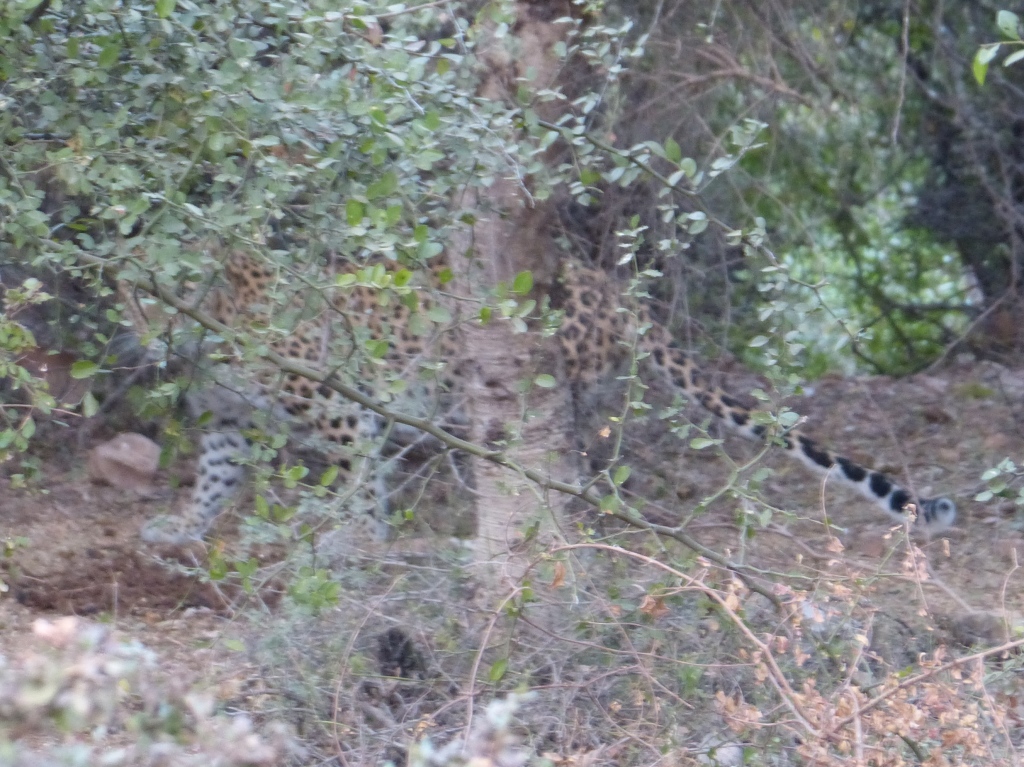
Safari number three, Saturday morning, took us to District 7, where we continued not to spot any tigers. We did, however, experience some fairly dangerous driving maneuvers. We opted to risk tiger attack and walk up this short hill rather than risk rolling off the mountain in the jeep.
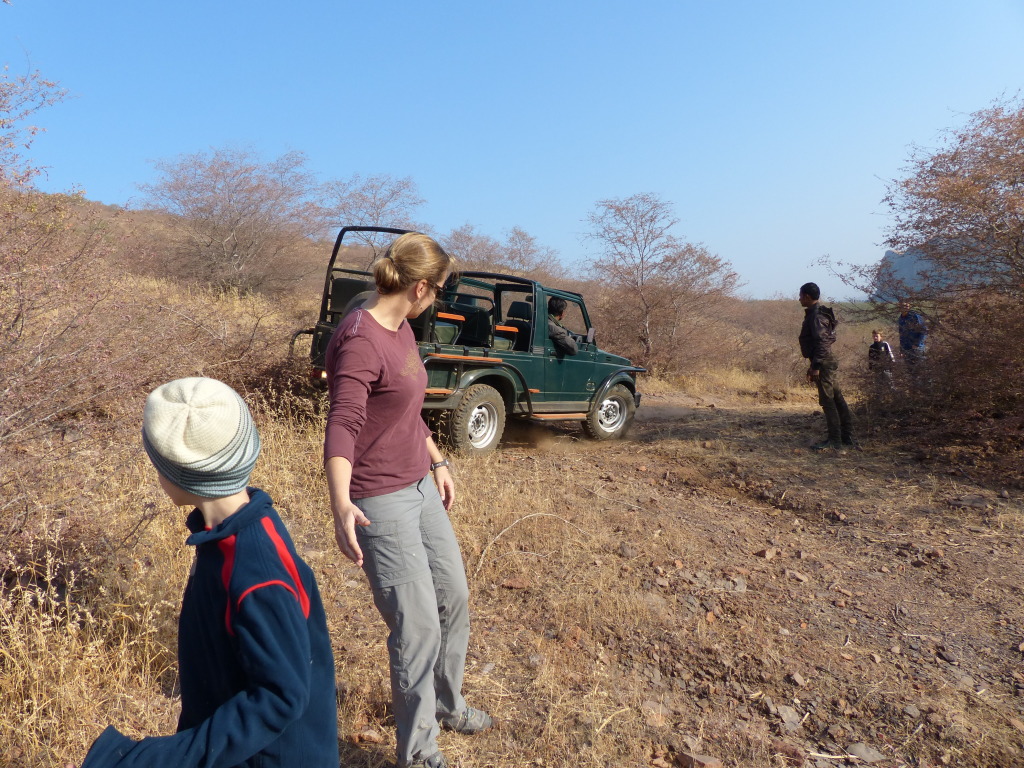
At the end of our safari, we pulled up to this gate to leave the park. Unfortunately, it was locked. Our guide explained: “The man who has the key in his pocket is not here.” Oh. OK.
So we waited. After awhile, someone arrived to unlock the gate, and we headed back to the hotel.
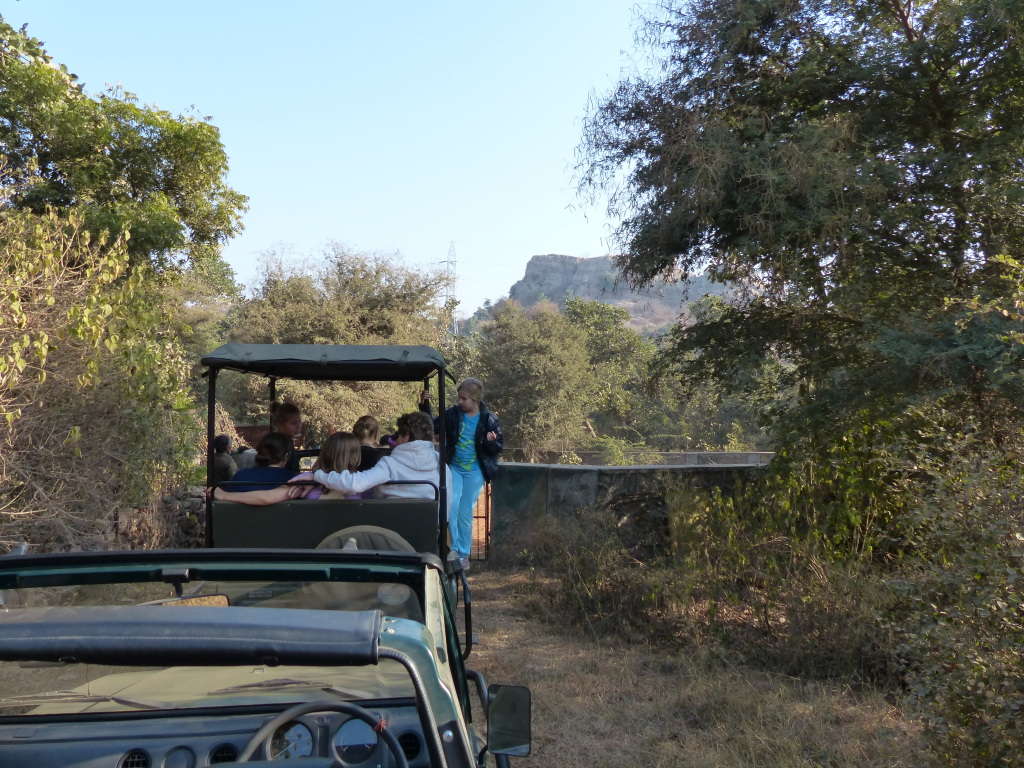
As our two jeeps arrived at our hotel, someone shouted, “There’s a tiger on the main road!” Our drivers immediately whipped the jeeps around and sped back out. This was possibly the most dangerous 10 minutes of my life. We drove ridiculously fast with no seatbelts in an open jeep, nearly popping out altogether every time we hit a pothole or speedbump, cresting hills in the wrong lane, swerving around pedestrians and slower vehicles at breakneck speed. Although several of us thought the tiger would be sitting next to the “main road” in town (a scary proposition!), it turned out the tiger was seen on the main road inside the park. By the time we arrived, other jeeploads shared the news of his escape into the forest. It’s really no surprise that we didn’t see a tiger. One of our guides said there are only about 56 in the whole park.
The train ride home was pleasant enough for Tony and me. Upgraded to second class, we had our own tiny compartment in a tranquil car. The rest of our group – back in “steerage,” as Liv called it – crammed into a compartment with four bunks and no curtain. Everyone in their train car seemed to be talking at full volume, and an overly friendly Rajasthani man desperately wanted to be their BFF. Yikes.
Overall, I loved Ranthambore. I always relish Rajasthan’s colors and chaos, but this trip rejuvenated me like no other domestic journey in recent memory. Nature, clean air, comfy beds, fun people. All good.

